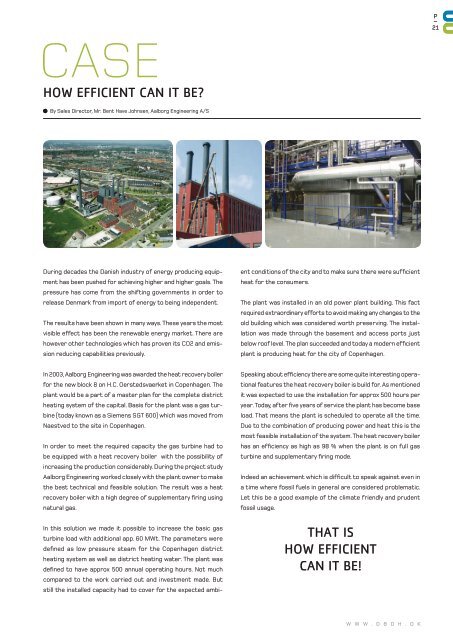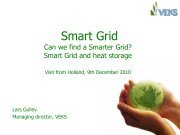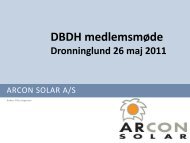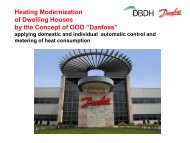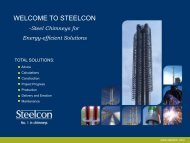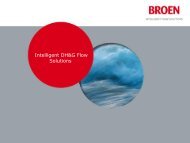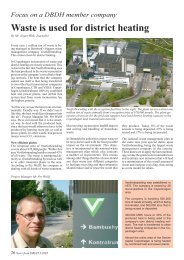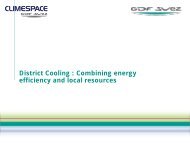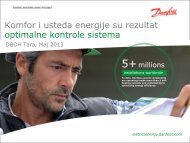Download - DBDH
Download - DBDH
Download - DBDH
You also want an ePaper? Increase the reach of your titles
YUMPU automatically turns print PDFs into web optimized ePapers that Google loves.
how EFFiCiEnt CAn it bE?<br />
By sales Director, Mr. Bent Have Johnsen, Aalborg engineering A/s<br />
During decades the Danish industry of energy producing equipment<br />
has been pushed for achieving higher and higher goals. the<br />
pressure has come from the shifting governments in order to<br />
release Denmark from import of energy to being independent.<br />
the results have been shown in many ways. these years the most<br />
visible effect has been the renewable energy market. there are<br />
however other technologies which has proven its co2 and emis-<br />
sion reducing capabilities previously.<br />
in 2003, Aalborg engineering was awarded the heat recovery boiler<br />
for the new block 8 on H.c. oerstedsvaerket in copenhagen. the<br />
plant would be a part of a master plan for the complete district<br />
heating system of the capital. Basis for the plant was a gas turbine<br />
(today known as a siemens sgt 600) which was moved from<br />
naestved to the site in copenhagen.<br />
in order to meet the required capacity the gas turbine had to<br />
be equipped with a heat recovery boiler with the possibility of<br />
increasing the production considerably. During the project study<br />
Aalborg engineering worked closely with the plant owner to make<br />
the best technical and feasible solution. the result was a heat<br />
recovery boiler with a high degree of supplementary firing using<br />
natural gas.<br />
in this solution we made it possible to increase the basic gas<br />
turbine load with additional app. 60 Mwt. the parameters were<br />
defined as low pressure steam for the copenhagen district<br />
heating system as well as district heating water. the plant was<br />
defined to have approx 500 annual operating hours. not much<br />
compared to the work carried out and investment made. But<br />
still the installed capacity had to cover for the expected ambi-<br />
ent conditions of the city and to make sure there were sufficient<br />
heat for the consumers.<br />
the plant was installed in an old power plant building. this fact<br />
required extraordinary efforts to avoid making any changes to the<br />
old building which was considered worth preserving. the installation<br />
was made through the basement and access ports just<br />
below roof level. the plan succeeded and today a modern efficient<br />
plant is producing heat for the city of copenhagen.<br />
speaking about efficiency there are some quite interesting operational<br />
features the heat recovery boiler is build for. As mentioned<br />
it was expected to use the installation for approx 500 hours per<br />
year. today, after five years of service the plant has become base<br />
load. that means the plant is scheduled to operate all the time.<br />
Due to the combination of producing power and heat this is the<br />
most feasible installation of the system. the heat recovery boiler<br />
has an efficiency as high as 98 % when the plant is on full gas<br />
turbine and supplementary firing mode.<br />
indeed an achievement which is difficult to speak against even in<br />
a time where fossil fuels in general are considered problematic.<br />
let this be a good example of the climate friendly and prudent<br />
fossil usage.<br />
thAt is<br />
how EFFiCiEnt<br />
CAn it bE!<br />
w w w . D B D H . D k<br />
p _<br />
21


